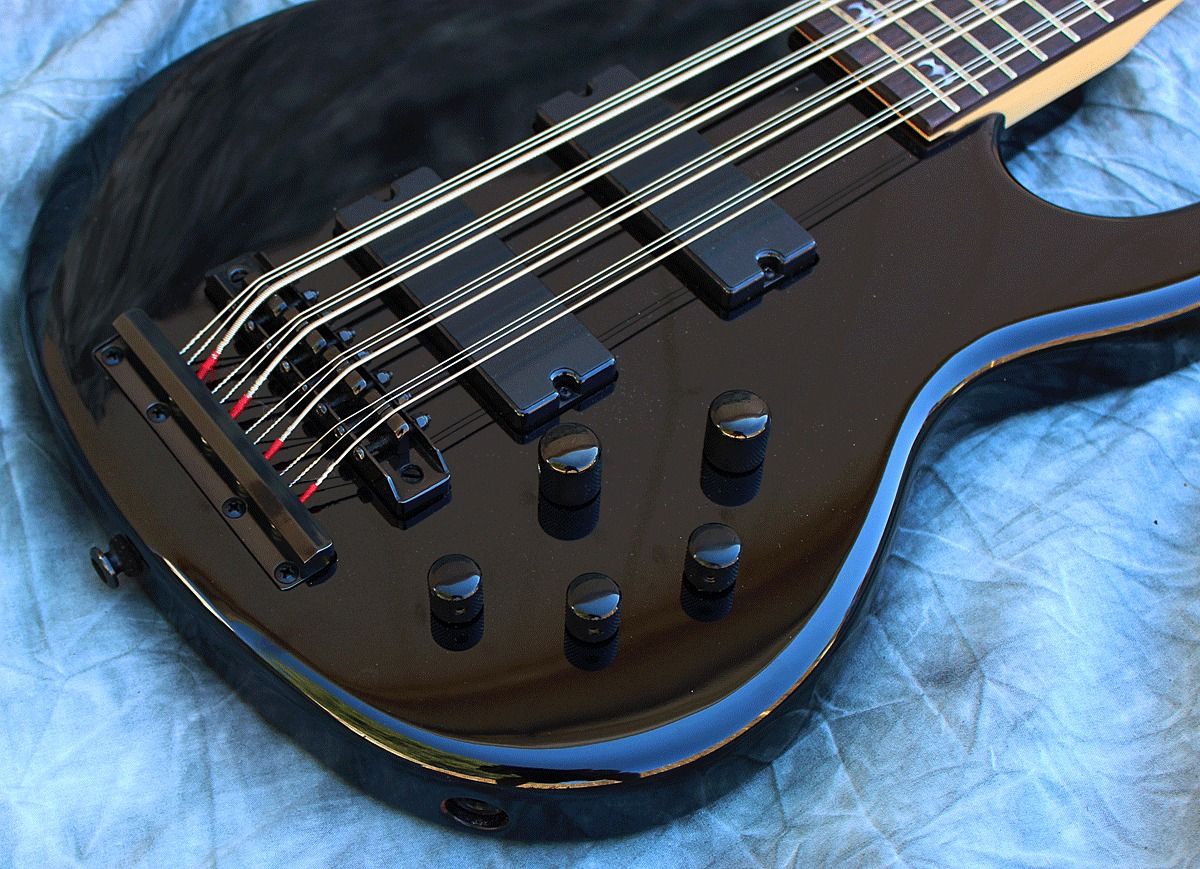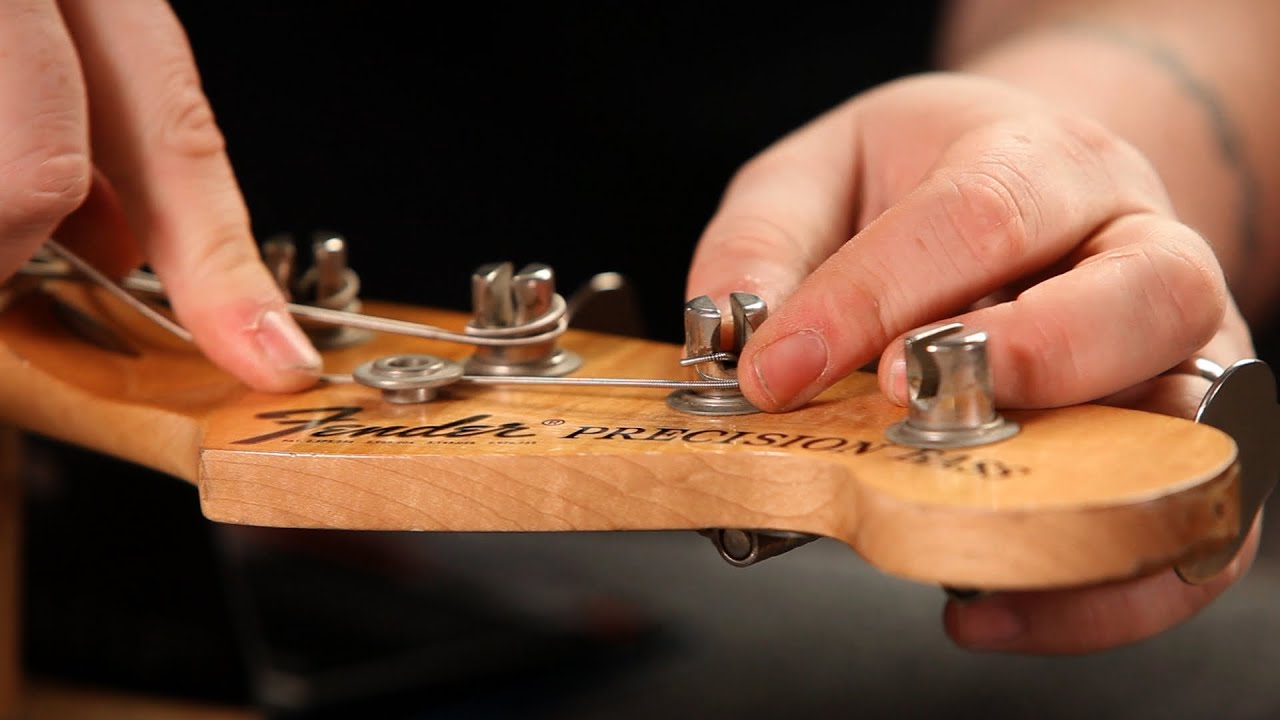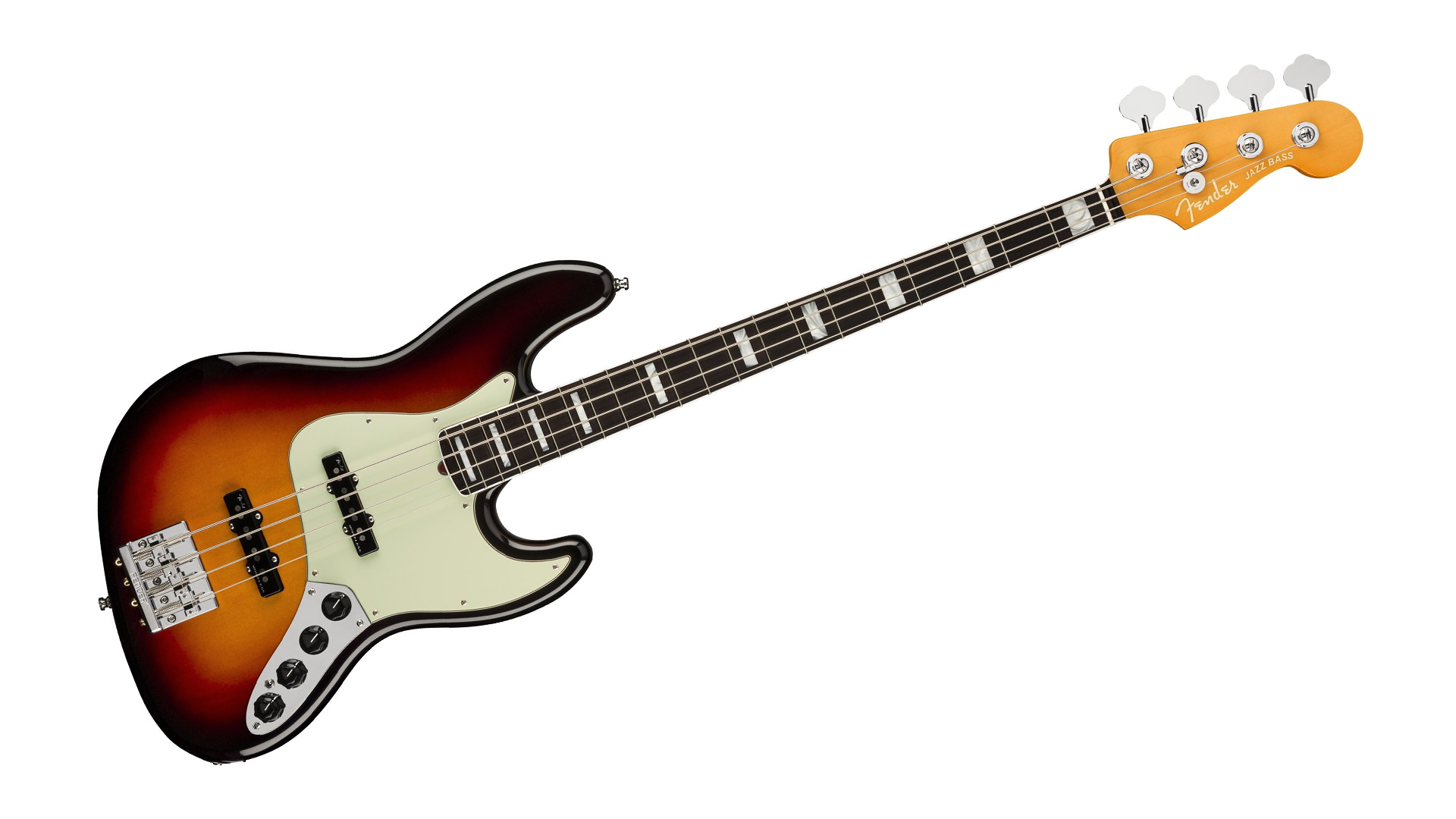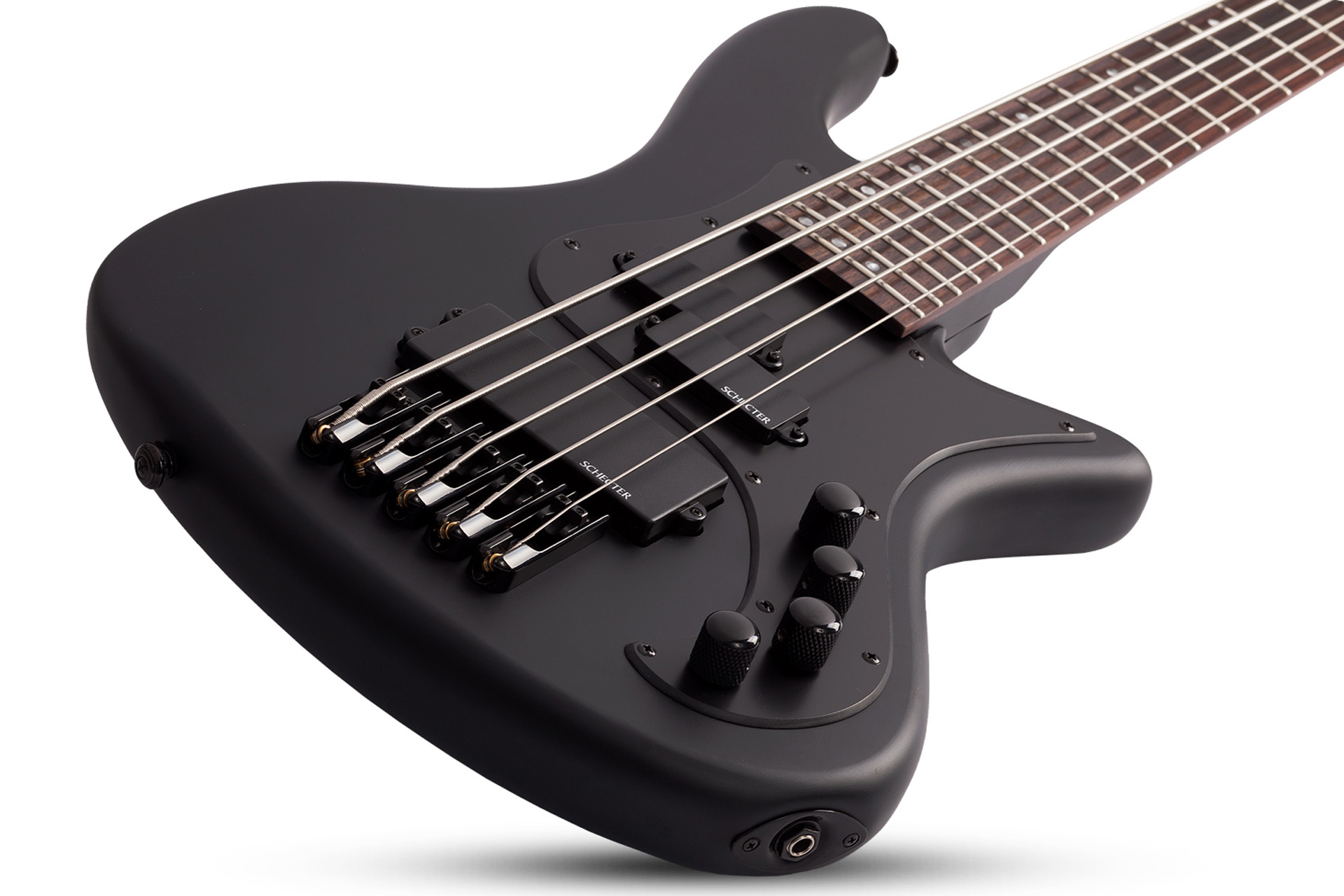Home>Instruments>Bass>How To Tune A 6 String Bass


Bass
How To Tune A 6 String Bass
Modified: February 14, 2024
Learn how to tune a 6 string bass with our comprehensive guide. Improve your bass playing skills and achieve the perfect sound.
(Many of the links in this article redirect to a specific reviewed product. Your purchase of these products through affiliate links helps to generate commission for AudioLover.com, at no extra cost. Learn more)
Table of Contents
Introduction
Tuning a 6-string bass can be a bit more complex than tuning a standard 4-string bass. With two additional strings to consider, it’s important to approach the tuning process with precision and attention to detail. Whether you’re a seasoned bassist looking to expand your range or a beginner exploring the versatility of the instrument, mastering the art of tuning a 6-string bass is essential.
In this article, we will guide you through the process of tuning each string on a 6-string bass, ensuring that you achieve optimal sound quality and pitch accuracy. We will discuss the tools and equipment you’ll need, as well as provide step-by-step instructions for tuning each individual string. So, grab your bass and let’s dive in!
Before we begin, it’s important to note that having a well-tuned bass is crucial for producing great music. It not only enhances the overall sound but also improves your playing experience. Additionally, a properly tuned bass harmonizes with other instruments, giving your music a polished and professional touch.
So, whether you’re planning to jam with friends, record in a studio, or perform on stage, having a perfectly tuned 6-string bass will elevate your playing to the next level. Let’s get started!
Understanding the 6 String Bass
The 6-string bass is an extended version of the traditional 4-string bass guitar. It features two additional strings, typically tuned lower than the E string on a standard bass. The extra strings provide a wider range of notes, allowing bassists to explore new tonal possibilities and play more complex musical arrangements.
The standard tuning for a 6-string bass is B-E-A-D-G-C. This means that the strings are tuned in ascending order, starting from the lowest-pitched string (the B string) and ending with the highest-pitched string (the C string).
One of the main advantages of a 6-string bass is the extended range it offers. The low B string allows bassists to achieve deeper and more resonant low-end tones, while the high C string adds brightness and clarity to the higher register. This expanded range enables bassists to play intricate melodies, harmonies, and chord voicings that would be difficult or impossible to achieve on a standard 4-string bass.
When playing a 6-string bass, it’s important to consider the additional string spacing and larger neck size compared to a 4-string bass. This may require some adjustment to your playing technique, especially if you’re transitioning from a 4-string bass. Take the time to familiarize yourself with the spacing and feel of the extra strings, and experiment with different fingerings to find what works best for you.
Another aspect to consider is the string gauge. Since the low B and high C strings have different tension requirements compared to the other strings, it’s common for bassists to use a different string gauge for these strings. Experimenting with different gauge combinations can help you find the right balance between playability and tone on your 6-string bass.
Overall, the 6-string bass is a versatile instrument that opens up new sonic possibilities for bass players. Understanding its unique construction, tuning, and capabilities will help you make the most out of this exciting addition to your musical arsenal.
Tools and Equipment Needed
Before you begin tuning your 6-string bass, it’s important to gather the necessary tools and equipment to ensure accurate and efficient tuning. Here are the essential items you’ll need:
- Electronic Tuner: A reliable electronic tuner is crucial for precise tuning. There are various types available, such as clip-on tuners, pedal tuners, and smartphone apps. Choose one that suits your preference and make sure it’s designed for bass guitar tuning.
- Tuning Key/Wrench: Most bass guitars come with a tuning key or wrench for adjusting the tuning pegs. Ensure you have the correct size tool to fit the pegs on your bass.
- Clean Cloth: It’s always a good idea to have a clean cloth on hand to wipe down your bass before and after tuning. This will help maintain the instrument’s condition and prevent any buildup of dirt or oils on the strings.
- Optional: String Lubricant/Cleaner: If you want to prolong the life of your strings and keep them in optimal condition, consider using a string lubricant or cleaner. These products help reduce friction and remove debris from the strings, improving their longevity and playability.
Once you have gathered all the necessary tools, you’re ready to start tuning your 6-string bass. Ensure that your environment is relatively quiet, as external noise can interfere with the accuracy of the tuning process.
Remember to take your time and be patient while tuning. It’s better to spend a few extra minutes ensuring each string is perfectly tuned rather than rushing through the process. With the right tools at your disposal, you’ll be able to achieve the best possible sound from your 6-string bass.
Step 1: Tuning the Low B String
The Low B string is the first string you will tune on your 6-string bass. This string is the lowest-pitched string and provides a deep and powerful bass foundation to your playing. Follow these steps to tune the Low B string:
- Ensure that your bass is properly set up and in good condition. This includes checking the intonation and adjusting the action if necessary. A well-maintained bass will make the tuning process easier and more accurate.
- Start by plucking the Low B string. If your bass is not already in tune, you will hear a low and dull sound.
- Using your electronic tuner, place it in a visible and accessible position. Some tuners can be clipped onto the headstock of your bass for convenience.
- Pluck the Low B string again and observe the tuner’s display. The tuner will indicate whether the string is flat (too low in pitch) or sharp (too high in pitch).
- Using the tuning key or wrench, turn the corresponding tuning peg for the Low B string. If the tuner indicates that the string is flat, turn the tuning peg in a clockwise direction to tighten the string and raise the pitch. If it’s sharp, turn the tuning peg counterclockwise to loosen the string and lower the pitch.
- Continue plucking the Low B string and adjusting the tuning peg until the tuner indicates that the string is perfectly in tune. Aim for a clear and steady reading on the tuner’s display.
- Once the Low B string is in tune, give it a gentle stretch by pulling it away from the fretboard. This will help stabilize the string’s pitch and minimize tuning fluctuations.
- Finally, double-check the tuning by plucking the Low B string again and observing the tuner. Make any necessary adjustments until the string is perfectly in tune.
By following these steps, you can ensure that the Low B string on your 6-string bass is accurately tuned, providing a solid foundation for your bass playing. Remember to take your time and make small adjustments to achieve the desired pitch for optimal sound quality.
Step 2: Tuning the E String
After tuning the Low B string, it’s time to move on to tuning the E string on your 6-string bass. The E string is the second lowest-pitched string and contributes to the overall depth and richness of your bass sound. Follow these steps to tune the E string:
- Ensure that the Low B string is still in tune. It serves as the reference pitch for tuning the other strings.
- Pluck the E string and listen to its pitch. If the E string is not in tune, it may sound flat or sharp.
- Place your electronic tuner in a visible and accessible position. You can use a clip-on tuner or one that sits on a surface nearby.
- Pluck the E string again and observe the tuner’s display. The tuner will indicate whether the string is flat or sharp.
- Use the tuning key or wrench to turn the corresponding tuning peg for the E string. Follow the same process as before: clockwise to raise the pitch if the string is flat, and counterclockwise to lower the pitch if it’s sharp.
- Continue plucking the E string and adjusting the tuning peg until the tuner displays that the string is perfectly in tune. Aim for a clear and steady reading.
- Stretch the E string gently by pulling it away from the fretboard to stabilize its pitch.
- Double-check the tuning by plucking the E string again and observing the tuner. Make any necessary adjustments to ensure the string is perfectly in tune.
Following these steps will help you accurately tune the E string on your 6-string bass. It’s important to maintain the reference pitch by keeping the Low B string in tune throughout the tuning process. Take your time and make small adjustments to achieve the desired pitch for optimal sound quality. Once the E string is perfectly tuned, you’re one step closer to having a fully tuned and harmonious 6-string bass.
Step 3: Tuning the A String
After tuning the Low B and E strings, it’s time to move on to tuning the A string on your 6-string bass. The A string is the third lowest-pitched string and provides a solid foundation for your bass playing. Follow these steps to tune the A string:
- Ensure that the Low B and E strings are still in tune. They serve as the reference pitches for tuning the other strings.
- Pluck the A string and listen to its pitch. If the A string is not in tune, it may sound flat or sharp.
- Place your electronic tuner where you can easily see it. Make sure it’s ready to detect the pitch of the A string.
- Pluck the A string again and observe the tuner’s display. The tuner will indicate whether the string is flat or sharp.
- Use the tuning key or wrench to turn the corresponding tuning peg for the A string. Adjust the pitch clockwise to raise it if the string is flat, or counterclockwise to lower it if it’s sharp.
- Continue plucking the A string and adjusting the tuning peg until the tuner’s display shows that the string is perfectly in tune. Aim for a clear and steady reading.
- Stretch the A string gently by pulling it away from the fretboard, which helps stabilize its pitch.
- Double-check the tuning by plucking the A string again and observing the tuner. Make any necessary adjustments to ensure the string is perfectly in tune.
Following these steps will help you accurately tune the A string on your 6-string bass. Remember to keep the reference pitches of the Low B and E strings in tune throughout the process. Take your time and make small adjustments to achieve the desired pitch for optimal sound quality. Once the A string is perfectly tuned, you’re another step closer to having a fully tuned and harmonious 6-string bass.
Step 4: Tuning the D String
After tuning the Low B, E, and A strings, it’s time to move on to tuning the D string on your 6-string bass. The D string is the fourth lowest-pitched string and contributes to the overall depth and balance of your bass sound. Follow these steps to tune the D string:
- Ensure that the Low B, E, and A strings are still in tune. They serve as the reference pitches for tuning the other strings.
- Pluck the D string and listen to its pitch. If the D string is not in tune, it may sound flat or sharp.
- Position your electronic tuner for easy visibility and ensure it’s ready to detect the pitch of the D string.
- Pluck the D string again and observe the tuner’s display. The tuner will indicate whether the string is flat or sharp.
- Use the tuning key or wrench to turn the corresponding tuning peg for the D string. Adjust the pitch in a clockwise direction to raise it if the string is flat, or counterclockwise to lower it if it’s sharp.
- Continue plucking the D string and adjusting the tuning peg until the tuner’s display shows that the string is perfectly in tune. Aim for a clear and steady reading.
- Stretch the D string gently by pulling it away from the fretboard to stabilize its pitch.
- Double-check the tuning by plucking the D string again and observing the tuner. Make any necessary adjustments to ensure the string is perfectly in tune.
By following these steps, you can accurately tune the D string on your 6-string bass. Remember to maintain the reference pitches of the Low B, E, and A strings throughout the process. Take your time and make small adjustments to achieve the desired pitch for optimal sound quality. Once the D string is perfectly tuned, you’re getting closer to having a fully tuned and harmonious 6-string bass.
Step 5: Tuning the G String
After tuning the Low B, E, A, and D strings, it’s time to move on to tuning the G string on your 6-string bass. The G string is the fifth lowest-pitched string and contributes to the overall tonal range and versatility of your bass playing. Follow these steps to tune the G string:
- Ensure that the Low B, E, A, and D strings are still in tune. They serve as the reference pitches for tuning the remaining strings.
- Pluck the G string and listen to its pitch. If the G string is not in tune, it may sound flat or sharp.
- Position your electronic tuner for easy visibility and ensure it’s ready to detect the pitch of the G string.
- Pluck the G string again and observe the tuner’s display. The tuner will indicate whether the string is flat or sharp.
- Use the tuning key or wrench to turn the corresponding tuning peg for the G string. Adjust the pitch in a clockwise direction to raise it if the string is flat, or counterclockwise to lower it if it’s sharp.
- Continue plucking the G string and adjusting the tuning peg until the tuner’s display shows that the string is perfectly in tune. Aim for a clear and steady reading.
- Stretch the G string gently by pulling it away from the fretboard to stabilize its pitch.
- Double-check the tuning by plucking the G string again and observing the tuner. Make any necessary adjustments to ensure the string is perfectly in tune.
Following these steps will help you accurately tune the G string on your 6-string bass. Remember to keep the reference pitches of the Low B, E, A, and D strings in tune throughout the process. Take your time and make small adjustments to achieve the desired pitch for optimal sound quality. Once the G string is perfectly tuned, you’re getting closer to having a fully tuned and musically balanced 6-string bass.
Step 6: Tuning the C String
After tuning the Low B, E, A, D, and G strings, it’s time to move on to tuning the C string on your 6-string bass. The C string is the highest-pitched string on a 6-string bass and adds brightness and clarity to your playing. Follow these steps to tune the C string:
- Ensure that the Low B, E, A, D, and G strings are still in tune. They serve as the reference pitches for tuning the remaining string.
- Pluck the C string and listen to its pitch. If the C string is not in tune, it may sound flat or sharp.
- Make sure your electronic tuner is easily visible and ready to detect the pitch of the C string.
- Pluck the C string again and observe the tuner’s display. The tuner will indicate whether the string is flat or sharp.
- Turn the corresponding tuning peg for the C string using your tuning key or wrench. Adjust the pitch in a clockwise direction to raise it if the string is flat, or counterclockwise to lower it if it’s sharp.
- Continue plucking the C string and adjusting the tuning peg until the tuner’s display shows that the string is perfectly in tune. Aim for a clear and steady reading.
- Stretch the C string gently by pulling it away from the fretboard to stabilize its pitch.
- Double-check the tuning by plucking the C string again and observing the tuner. Make any necessary adjustments to ensure the string is perfectly in tune.
By following these steps, you can accurately tune the C string on your 6-string bass. Ensure the reference pitches of the Low B, E, A, D, and G strings are maintained throughout the process. Take your time and make small adjustments to achieve the desired pitch for optimal sound quality. Once the C string is perfectly tuned, congratulations! You have successfully tuned all the strings on your 6-string bass, and you’re ready to dive into the world of full, rich, and melodically diverse bass playing.
Conclusion
Congratulations on successfully tuning your 6-string bass! By following the step-by-step process outlined in this article, you have ensured that each string of your bass is accurately tuned, allowing you to achieve the best sound quality and musicality. Tuning a 6-string bass may require a bit more time and attention compared to a standard 4-string bass, but the added range and versatility of the instrument make it well worth the effort.
Remember to regularly check the tuning of your bass, as strings can naturally lose their pitch over time due to factors like temperature changes and playing. A well-tuned bass not only enhances your playing experience but also enables you to create harmonious and well-balanced music.
Now that you have a properly tuned 6-string bass, it’s time to explore the expanded possibilities that the instrument offers. Experiment with different playing techniques, chord voicings, and melodic lines to take advantage of the extended range and tonal options. Embrace the opportunity to create complex and intricate bass lines that will add depth and richness to your music.
Remember, tuning is just one aspect of playing the bass. Continuously work on refining your technique, exploring different musical styles, and honing your musicality. With practice and dedication, you’ll become a more versatile and skilled bassist.
So, grab your bass, lock in the tuning, and let your creativity flow. Whether you’re playing in a band, recording in the studio, or simply enjoying some solo bass exploration, the well-tuned 6-string bass will be your faithful companion on your musical journey. Happy playing!











